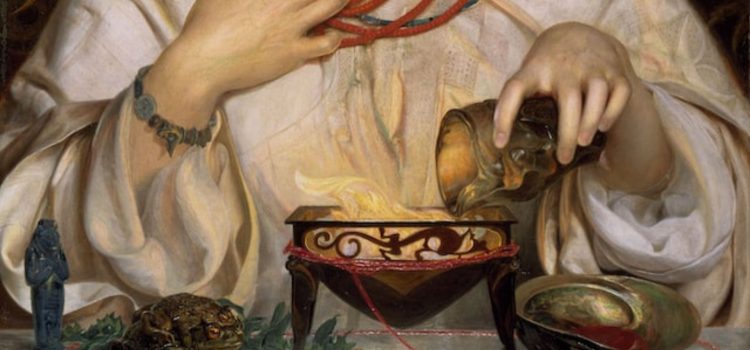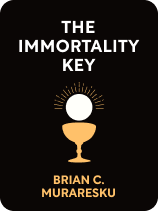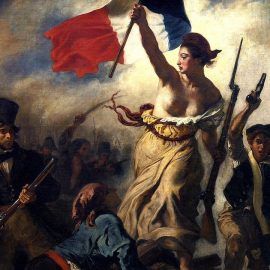

This article is an excerpt from the Shortform book guide to "The Immortality Key" by Brian C. Muraresku. Shortform has the world's best summaries and analyses of books you should be reading.
Like this article? Sign up for a free trial here.
What was the drink consumed during the Eleusinian Mysteries? What was the purpose of the sacred brew?
During the rituals of the Eleusinian Mysteries, the initiates consumed “kukeon,” a barley-based beer. According to Brian Muraresku, the author of The Immortality Key, the kukeon brew was likely psychedelic because it contained ergot—a fungus that possesses hallucinogenic properties.
Muraresku presents the following evidence that suggests that the Eleusinian Mysteries drink was psychedelic.
Written and Historical Evidence
Muraresku begins by discussing a written record that says the Eleusinian Mysteries drink (kukeon) was barley-based, as well as images of barley carved on the temple, to show that kukeon was a type of beer. But he says it’s also known that beer of that time was not like the beer we drink today. He believes kukeon was likely ergotized beer.
Ergot is a fungus that infests barley. Even today, brewers have to be careful about removing it from the grain. In high amounts it can be lethal, but in lower amounts it acts as a hallucinogen.
It’s likely that most early beer had some ergot in it, Muraresku explains, because it would have been difficult to create the sterile conditions necessary to remove all of it. So, he says early people in various parts of the world were probably drinking (at least mildly) hallucinogenic beer. Those at Eleusis, he argues, may have been brewing it that way purposefully, knowing the right techniques and dosages, in a “controlled contamination” process. For physical evidence of this, Muraresku turns to new advances in archaeological methods.
| Ergot Experimentation Leads to LSD In the early 1900s, European researchers investigated the potential medical uses of ergot, and in 1935, a Swiss chemist named Albert Hoffman began experimentation with ergot alkaloids. Through this experimentation, Hoffman identified a chemical component of ergot called lysergic acid, and he began to create derivatives of it—the 25th derivative would be a revolutionary invention called “LSD-25.” Hoffman discovered LSD-25’s effects through self-experimentation. On April 19, 1943, he ingested a small amount of the LSD-25, and he rode his bicycle home from the lab while experiencing history’s first “acid trip,” which is recorded in full detail in his diary. Decades later, LSD found its way into the larger culture, particularly in the United States, where its usage became popular in the 1960s counterculture movement. April 19 is now known in counterculture circles as “Bicycle Day.” |
Archaeochemistry and Archaeobotany
Recent scientific advancements in archaeology make it possible to test for traces of chemical and botanical compounds on ancient vessels. Unfortunately, Muraresku learned that all the vessels excavated at Eleusis had been cleaned before this method became available, so none can be tested. He also discovered that there are numerous uncleaned vessels from sites in the region that are owned and stored at the Vatican—as of yet, they haven’t allowed them to be tested. So, his archeological investigation had to turn to other sites where Greek settlements had formed abroad. Here he finds the evidence he’s looking for.
A Greek settlement on the eastern coast of Spain, settled around 450 BC, was found to have a similar ritual space to the one in Eleusis. Since it also had depictions of Demeter and Persephone, archaeologists believe it could have been a version of the Mysteries taken abroad. At this site, traces of ergotized beer were identified in a small chalice and on the teeth in a human male jawbone, indicating that it was being consumed. Also, he says, the shape, style, and small size of the chalice indicate that it was a ritual vessel, and whatever was drunk from it was likely very potent.
So, this and several other sites in Spain found evidence of psychedelic brews contemporaneous with the time of Eleusis. According to Muraresku, this evidence suggests that the kukeon of the Eleusian mysteries could have been psychedelic.
| Poison or Medicine? Researchers at the University of Victoria’s Institute for Substance Abuse Research have created an educational paper about the distinction between harmful substance abuse and the medicinal and ritual use of psychoactive plants by indigenous peoples. Some of the important points they make are: – People living in traditional cultures had a deep connection to the natural environment and relationships with the plants in that environment. They had complex, nuanced understandings of the use of those plants. – The difference between whether something is “poisonous” or “medicinal” is usually just a matter of dosage. – Mind-altering substances that were used by ancient peoples (many of which are still commonly used today) include cacao, tobacco, coca, coffee, alcohol, opium, cola, betel nuts, and cannabis. All of these substances can be used in healthy or unhealthy ways. They end by asking the reader to consider what causes some people in some cultures to use these substances in healthy or spiritual ways, and others to use them in unhealthy and destructive ways. |

———End of Preview———
Like what you just read? Read the rest of the world's best book summary and analysis of Brian C. Muraresku's "The Immortality Key" at Shortform.
Here's what you'll find in our full The Immortality Key summary:
- The secret that kept ancient Greeks and early Christians from fearing death
- The origins of Christianity and its overlap with pre-existing pagan customs
- The real reason why women can't be priests






